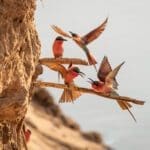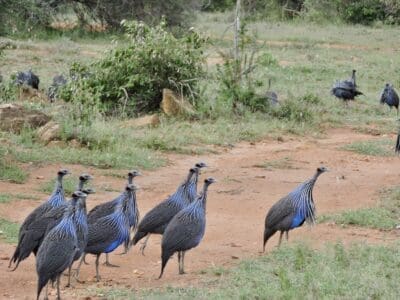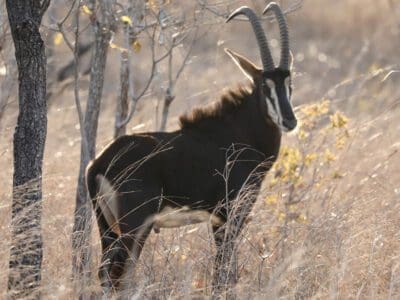Leopards are perhaps the most beautiful of Africa’s big cats. They are certainly the most secretive, and in contrast to lions or cheetahs, they are mainly active at night. Their adapted retinas allow them to see seven times better in the dark than humans! During the day they can sometimes be seen looking very relaxed stretched along a tree branch, although you’ll have to look very closely to see them! They are masters of camouflage, even in dry grass, so it’s always a thrill to see these elusive big cats on safari.
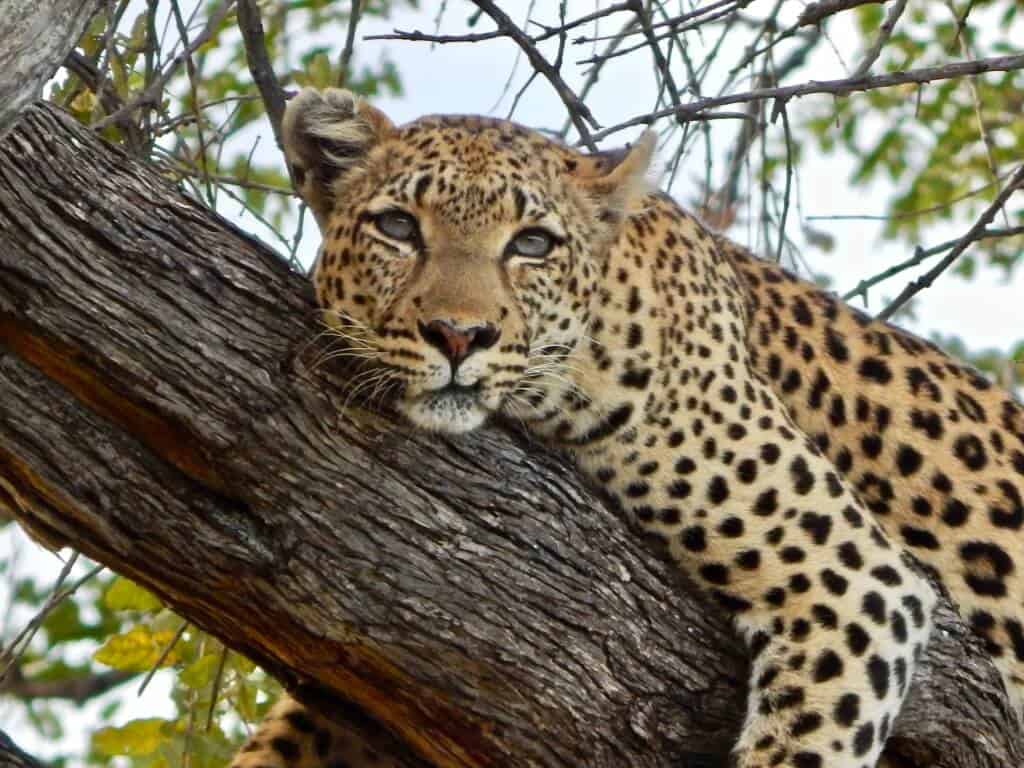
Leopards are the least social members of the big cat family
Adult leopards are solitary animals and only spend time with others to mate and raise their young. They each have their own territory, and scratch marks on trees and urine scent marks warn other leopards to stay away. They also scent mark by rubbing their faces against vegetation along pathways and territory boundaries. Once a cub leaves its mother at around two years old, she won’t take lightly to it coming back onto her turf.
Leopards can live in many different habitats
Although seldom seen, leopards are actually Africa’s most widely distributed big cats. Unlike lions and cheetahs who prefer open plains and savannah, leopards can live in warm or cold climates, in lush rainforests, arid deserts, and almost every other habitat in between. They’re good at acclimatising to different temperatures, and readily adapt their diet to thrive in different environments.
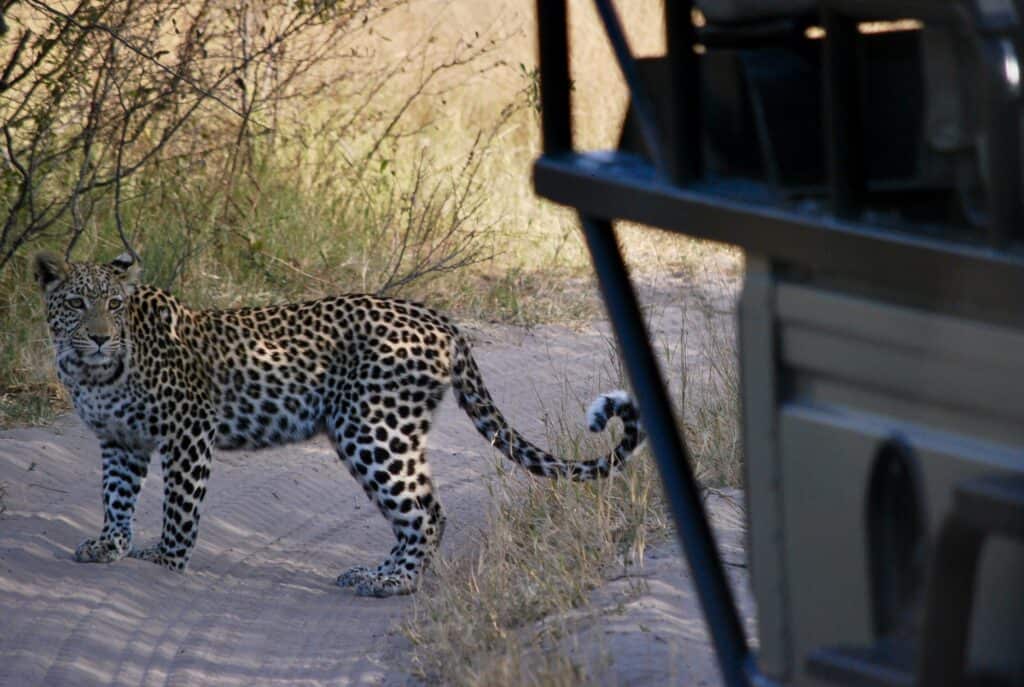
Leopards and cheetahs – spot the difference!
There’s often confusion – they are both shy, large spotted cats. But, if you ever saw a leopard and a cheetah standing side by side, the difference is very obvious.
- Leopards are smaller and stockier than cheetahs. A leopard stalks its prey carefully and quietly, until it’s five to ten metres within range and then pounces to take down its victim with a bite to the throat or neck. To do this they need bigger muscles, which contributes to their stocky build. Cheetahs however, stalk their prey and then chase them at high speed. As the fastest land mammal, cheetahs have smaller muscles giving them leaner, more streamlined bodies.
- Leopards have much larger heads with powerful muscles and an incredible bite force that far exceeds the bite force of a cheetah.
- And, perhaps the most obvious difference – leopards don’t have the striking “teardrop” lines that cheetahs have on their faces.
Their spots are not actually spots
Their spots are called rosettes because their shape is similar to that of a rose. They have solid black spots on the legs, head and sides. Rare black leopards also have spots but they are hard to see because their fur is so dark. In East Africa, the leopard’s rosettes are more circular but they tend to be more square-shaped in southern Africa.
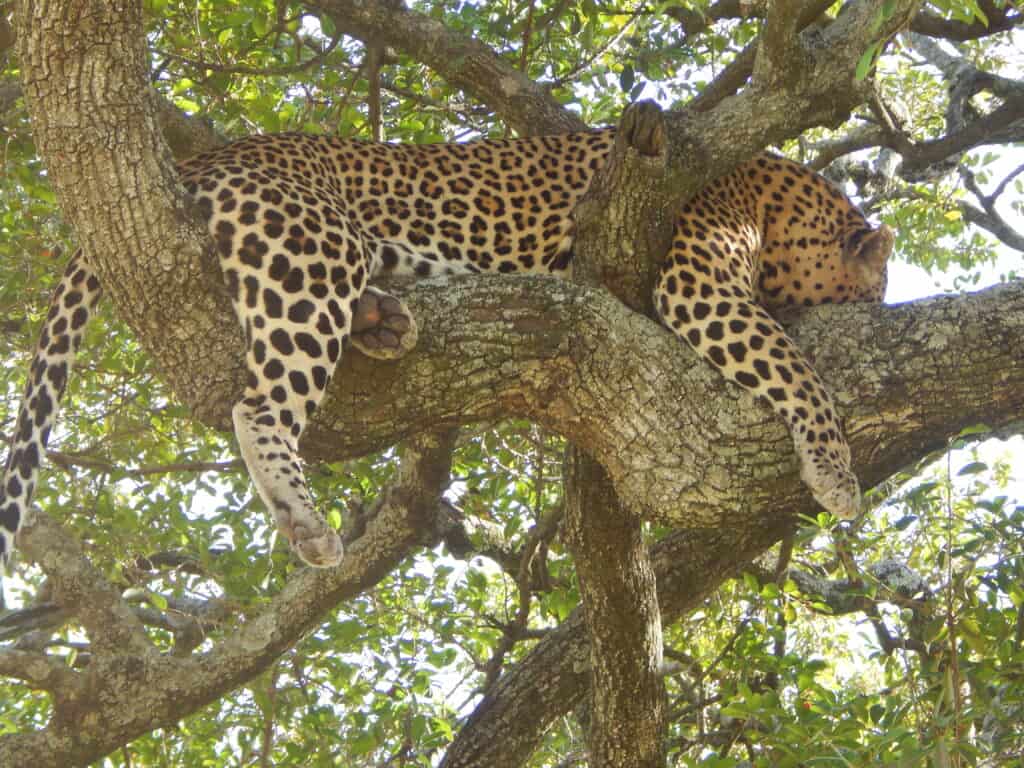
Leopards are excellent climbers
Their incredible strength allows them to climb trees while dragging a kill that is sometimes heavier than their own body weight. They do this to keep it out of reach of scavengers such as hyenas. Trees also offer the ideal escape from predators and provide the best vantage point.
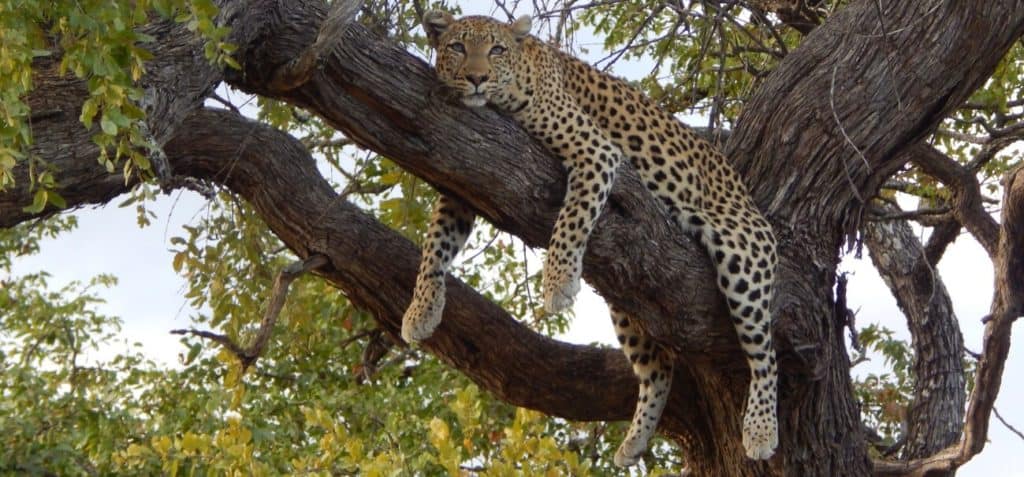
Leopards communicate with distinctive calls
Their hoarse, raspy cough, often heard at night on safari, warns an intruder that they may be trespassing on his territory. Leopards can also growl when angry, and purr when relaxed.
Males are much bigger than females
Males are much larger and stockier, and have a significantly bigger head and paws compared to females. Male leopards can weigh up to 90kgs, with females around 60kgs.
Female leopards give birth any time of the year
They usually give birth to two or three cubs who will stay with their mother until they are about two years old, when they are old enough to hunt and take care of themselves. The mother hides her young cubs in a lair – outcrops of granite boulders, old aardvark holes or dense thickets at the bottom of deep gulleys. To avoid discovery by lions, hyenas, and baboons who will kill the vulnerable cubs she changes the lair every few days.

Leopards are superb athletes!
They are faster than a lion and can run at speeds of up to 58km/h! They can leap up to 6 meters (that’s the length of three adults lying head to toe!), and jump 3 meters straight up in the air.
So where’s your best chance of seeing this elusive big cat?
South Luangwa in Zambia is known as the Valley of the Leopards, and deservedly so. It’s one of the best places in Africa to see these beautiful cats, and I’ve had incredible sightings every time I’ve been there. Come and join me in Zambia in September 2023!



